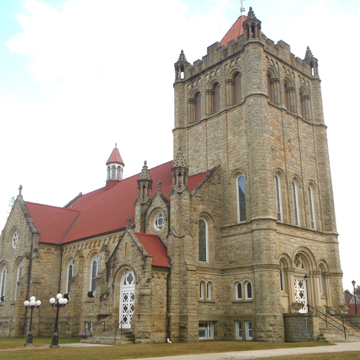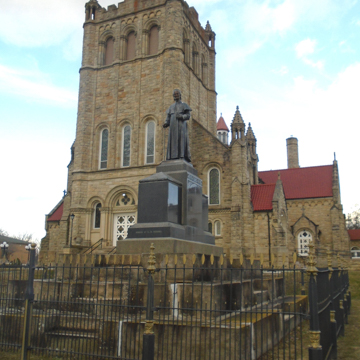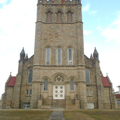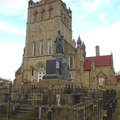St. Michael's church is a product of the convergence of the two most influential and diametrically opposed denizens of Loretto: one born a prince who lived as a pauper, the other born a pauper who aspired to live as a prince. Father Demetrius Augustine Gallitzin, son of a Russian prince and Prussian Catholic mother, went to Baltimore in 1792 to study under Bishop John Carroll. He gave up his title and became a Roman Catholic priest and missionary in the Allegheny Mountains after 1799. He founded and built the first church here in 1800, and after forty years of tending his flock, he died in Loretto, known simply as “Father Smith” (his mother's maiden name was Schmettan). Fifty-nine years later, the other major name in Loretto's history, Charles Schwab, commissioned this stone church and a black marble statue to mark Gallitzin's grave.
The Romanesque Revival church was designed by Frederick Osterling, Schwab's favorite architect, who designed Schwab's house in Braddock ten years before ( AL55) and his first summerhouse in Loretto, now called Bonaventure Hall (see CA5). The immense square tower pierced by two layers of round-arched windows and topped by squat pinnacles does more to tie the church to earth than raise it heavenward. As such, it is a fitting symbol of Schwab's all-too-earthly life.
The adjacent three-story Italianate manse is also attributed to Osterling. At 357 St. Mary's Street, Gallitzin's two-story simple home and attached private chapel, built to replace his log house in 1832, have been preserved, along with some of his effects.







